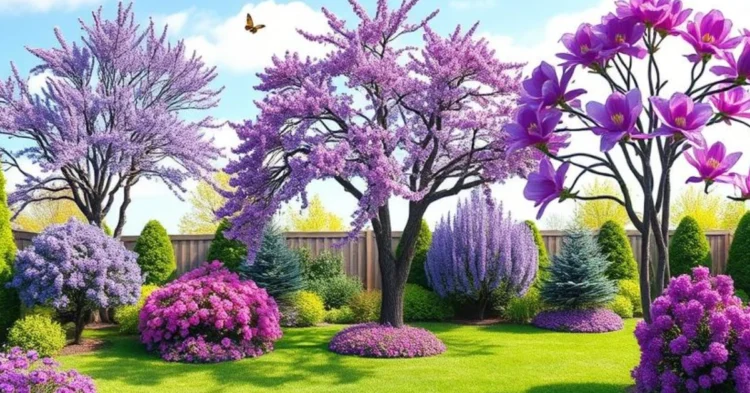If you’re looking for a tree with purple flowers to add a splash of color and elegance to your garden, you’re in luck. Not only do these trees bring beauty and shade, but some even offer delightful fragrances and edible blossoms. As someone who once tasted the sweet, honey-like petals of a locust tree behind the clay tennis courts in Armenia, I know the enchantment that comes from finding the perfect tree with purple flowers.
Table of Contents
Below, we explore six popular trees with purple flowers, their unique characteristics, and growing requirements. From exotic Jacarandas to hardy Lilacs, there’s something here for every climate and garden design.
1. Jacaranda Tree — The Iconic Tree With Purple Flowers
The Jacaranda is perhaps the most recognizable and sought-after tree with purple flowers in the world. With its fern-like leaves and trumpet-shaped violet-blue flowers, it creates a magical canopy when in bloom.
- Zones: 9b–11
- Height/Spread: 25–50′ tall and 15–30′ wide
- Flowering Season: Late spring and again in fall
- Notable Feature: Extended blooming period and vibrant flower fall
Tip: If you live in a colder climate, you can grow a Jacaranda in a container while it’s young, though eventually it will need more space to grow.
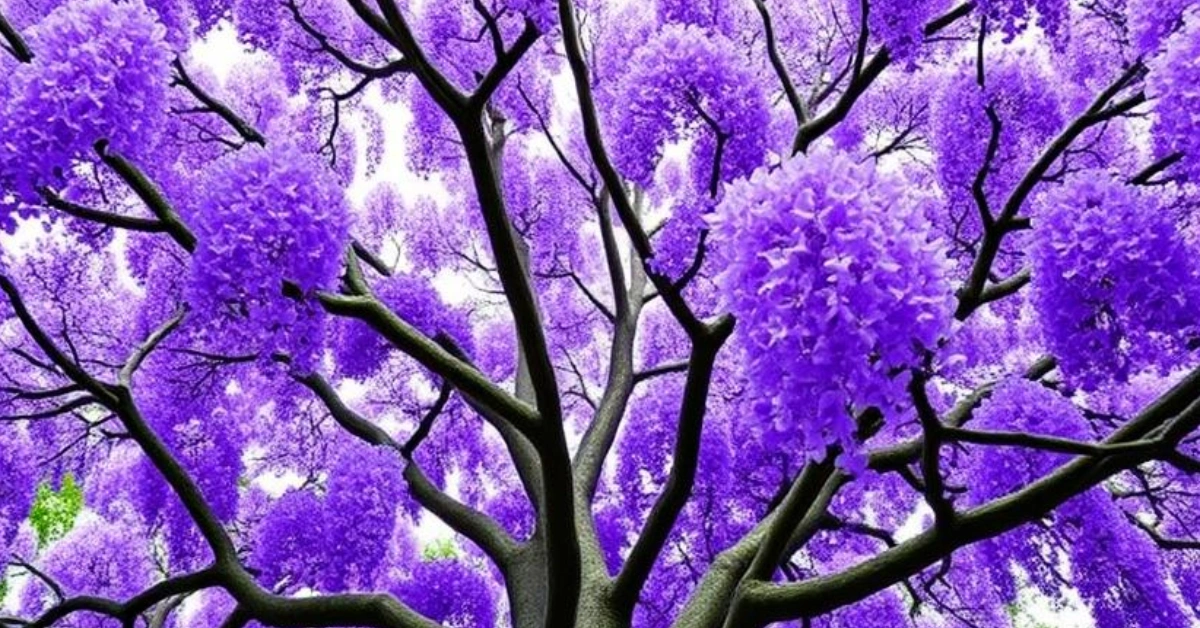
2. Mountain Laurel Tree — A Hardy Tree With Purple Flowers (And a Grape Scent)
The Mountain Laurel (Sophora secundiflora), also known as the Texas Mountain Laurel, is a small, tough tree with purple flowers that not only survives drought but thrives in rocky soil. Its flower clusters smell like grape candy — many compare it to Kool-Aid.
- Zones: 5–9
- Height/Spread: 7–15′ at maturity
- Flowering Season: Early spring
- Notable Feature: Grape-scented blossoms
Fun Fact: It’s one of the first trees to bloom in Central Texas and a great option for low-maintenance landscapes.
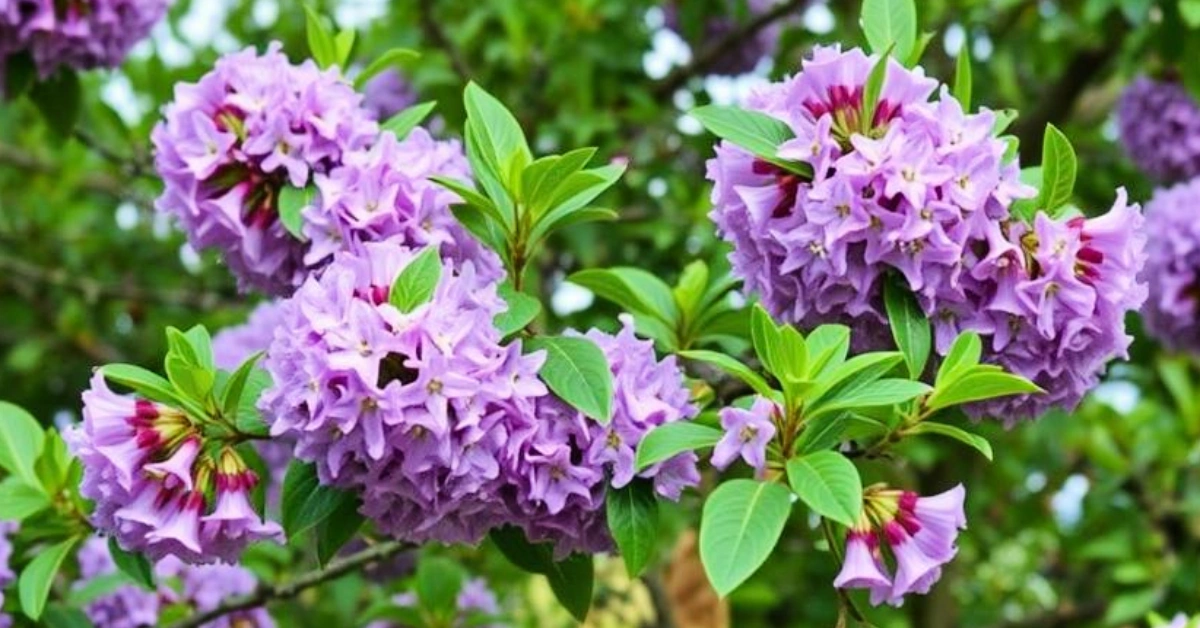
3. Purple Robe Locust — A Useful, Edible Tree With Purple Flowers
The Purple Robe Locust is a fast-growing tree with purple flowers that is as practical as it is pretty. Its blooms not only attract pollinators but are edible, tasting sweet and delicate. However, note: the bark and leaves are toxic, so be cautious.
- Zones: 4–8
- Height/Spread: 30–40′ tall and 25–30′ wide
- Flowering Season: Late spring
- Notable Feature: Edible flowers; nitrogen fixer for soil
Sustainability Tip: These trees are great for erosion control and land reclamation thanks to their nitrogen-fixing roots.
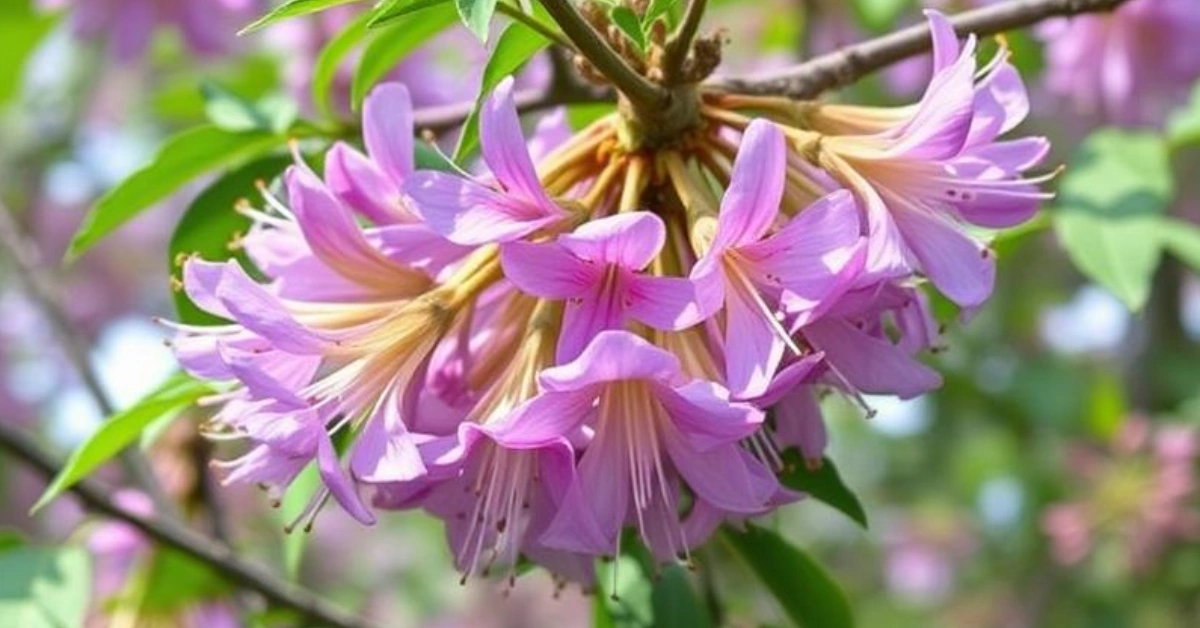
4. Purple Lily Magnolia — A Compact, Ornamental Tree With Purple Flowers
The Purple Lily Magnolia is ideal for small spaces, borders, or as a standout specimen tree. Unlike larger magnolia species, this tree with purple flowers is compact but still eye-catching. Its tulip-shaped blooms appear in early spring and sometimes again in summer.
- Zones: 5–8
- Height/Spread: 8–12′ at maturity
- Flowering Season: Spring
- Notable Feature: Great for hedges and urban gardens
Garden Design Tip: Plant several along a path or driveway for a breathtaking floral alley effect.
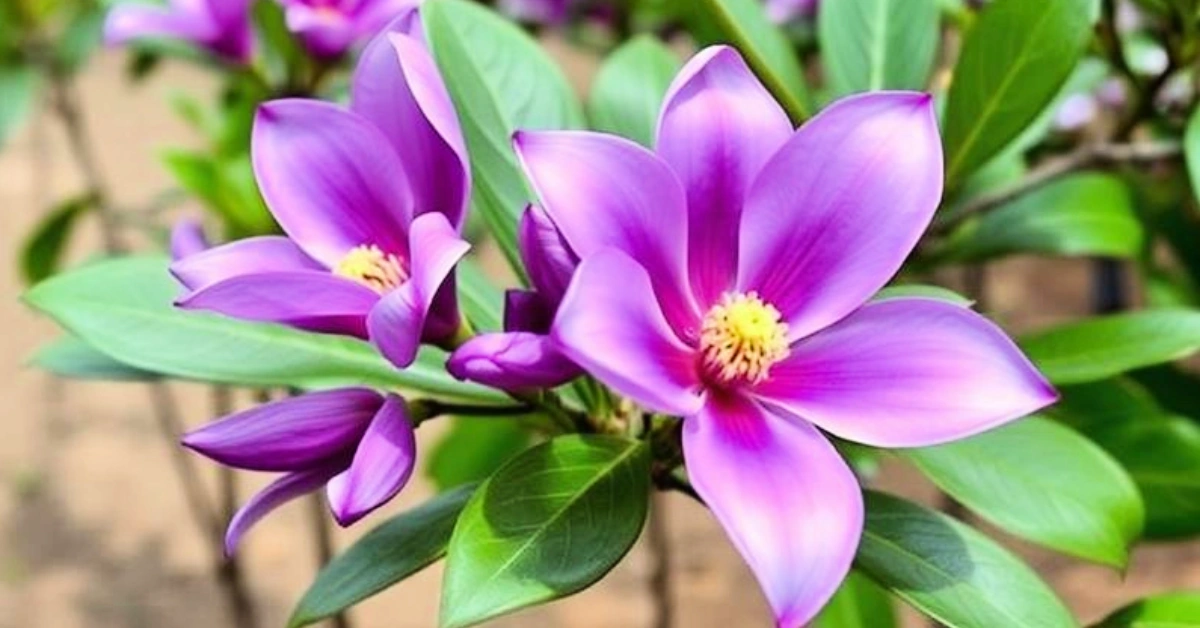
5. Lilac Tree — A Cold-Hardy Tree With Purple Flowers and Strong Fragrance
No list of trees with purple flowers is complete without the Lilac Tree. Known for its powerful fragrance and nostalgic charm, lilacs are cold-hardy and perfect for northern climates. While often considered a shrub, some varieties are grown as small trees.
- Zones: 3–7
- Height/Spread: 8–15′ tall and 6–12′ wide
- Flowering Season: Late spring
- Notable Feature: Attracts butterflies and pollinators
Bonus: Use Lilacs as windbreaks, hedges, or privacy screens while enjoying their wonderful scent.
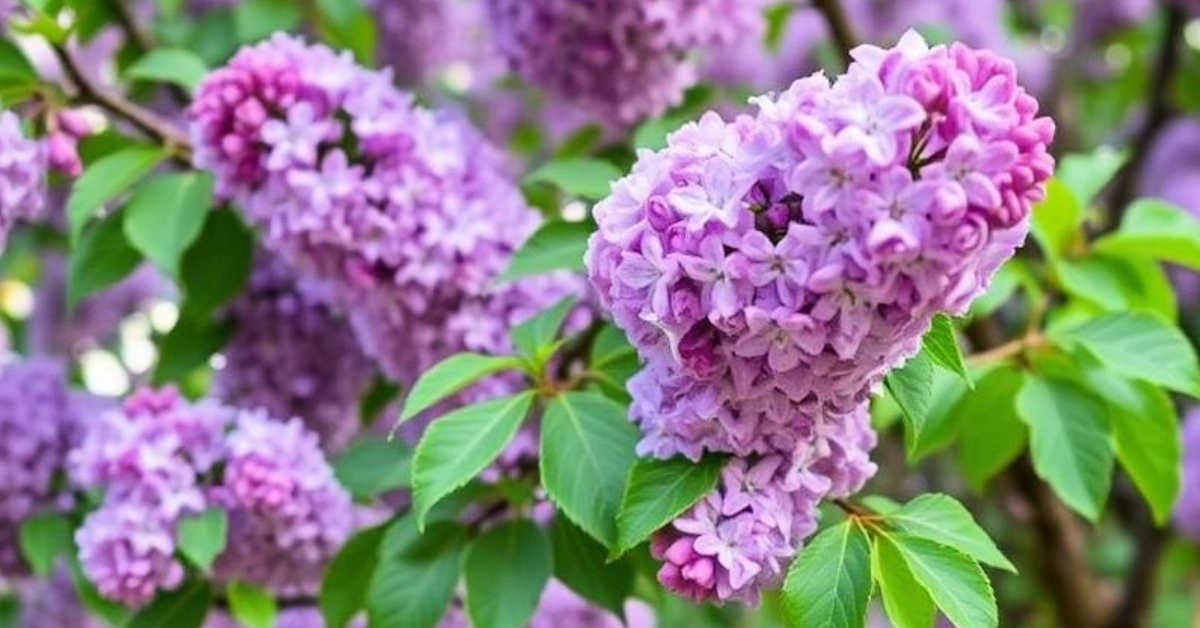
6. Crape Myrtle Tree — A Long-Blooming Tree With Purple Flowers from Asia
The Crape Myrtle, native to China and Korea, is a favorite southern tree with purple flowers known for blooming all summer long. It’s also drought-tolerant and comes in dwarf, semi-dwarf, and standard tree forms.
- Zones: 6–10
- Height/Spread: 10–30′ tall and 6–15′ wide
- Flowering Season: Mid to late summer
- Notable Feature: Heat and drought tolerant
Naming Note: It’s also spelled “crepe myrtle” or “crepemyrtle” — all refer to the same beautiful tree.
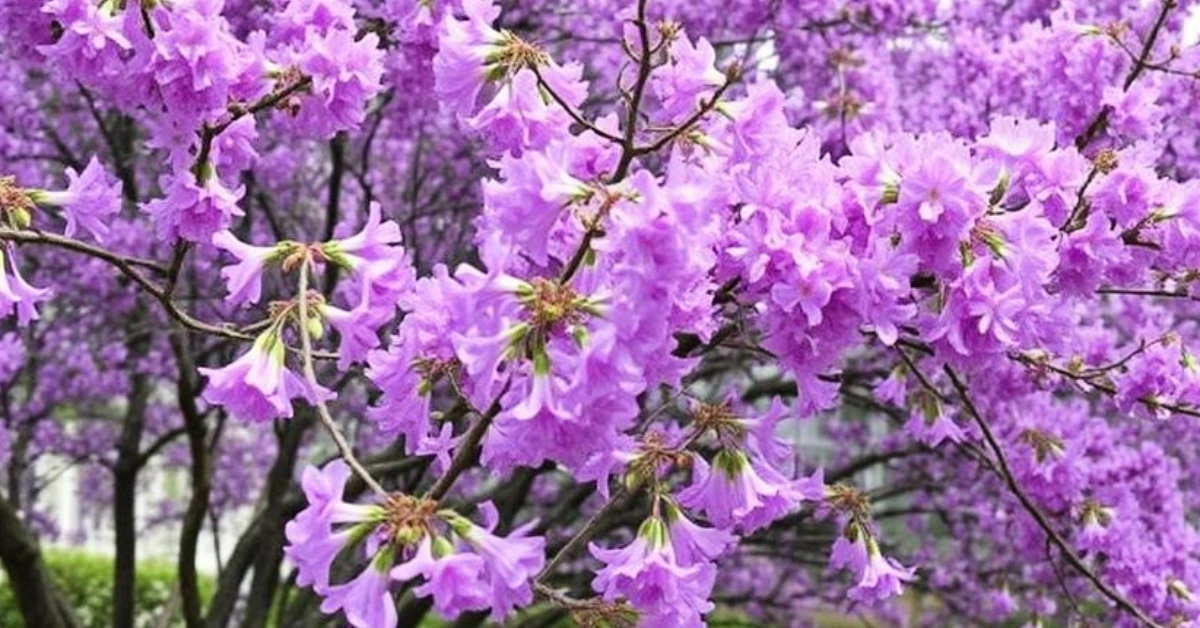
Why Choose a Tree With Purple Flowers?
Planting a tree with purple flowers isn’t just about beauty. It can offer:
- Seasonal interest across spring, summer, and even fall
- Pollinator benefits to bees, birds, and butterflies
- Privacy and shade in your yard
- In some cases, edible flowers and soil improvement
Whether you’re aiming for a romantic garden feel or a bold landscape statement, there’s a tree with purple flowers for every yard and climate.
Ready to Plant a Tree With Purple Flowers?
Before purchasing, make sure the tree is suitable for your USDA growing zone and fits your available space. You can find these stunning trees with purple flowers at local nurseries or specialty online retailers. If you’re curious about more flowering or shade trees, check out our Tree Catalog or Shop Page.
Final Thoughts
From the iconic Jacaranda Tree to the compact Purple Lily Magnolia, there’s a perfect tree with purple flowers for every garden dream. These trees don’t just add beauty — they add function, fragrance, wildlife value, and even edible surprises.
So whether you’re reminiscing about a childhood moment like mine in Armenia or just hoping to add vibrant color to your backyard, choosing the right tree with purple flowers will elevate your landscape for years to come.

